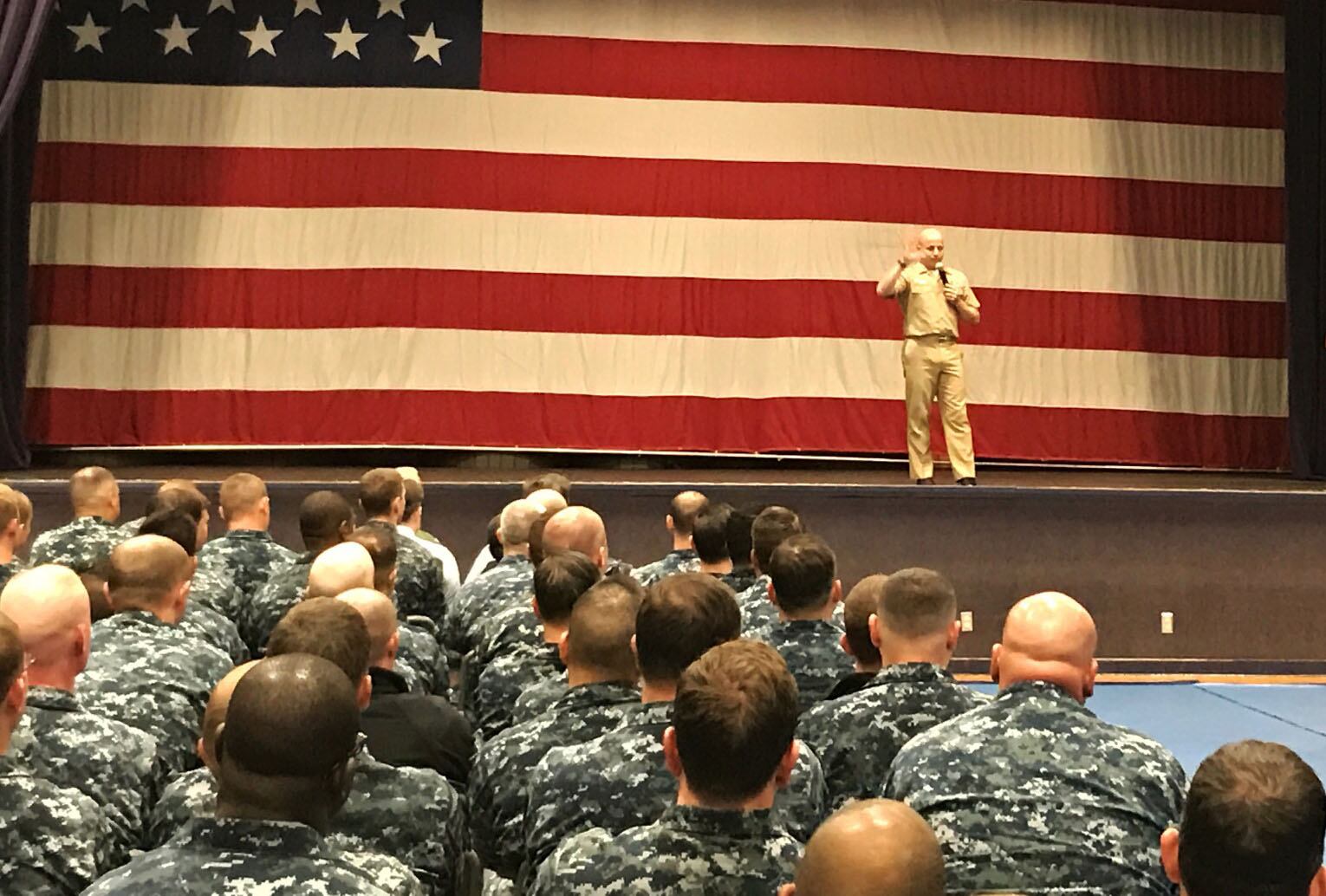Chief, pack your seabag.
The Navy may order more than 1,000 senior enlisted supervisors back to sea duty involuntarily, the latest move designed to tighten up manning levels at sea and in deploying operational units.
The new Navy policy announced Monday will take effect immediately and aims to fill the nearly 3,000 unfilled senior enlisted billets at sea.
Most of those gaps —about 2,080 — are at the E-7 level. Just over 700 are for senior chiefs and almost 200 unfilled billets are for master chiefs.
“When you make chief petty officer, I always tell them their job is going to get harder and part of it getting harder means we need you in those billets at sea, teaching those sailors,” Master Chief Petty Officer of the Navy (SG/IW) Steven Giordano told Navy Times.
The new policy is likely to be controversial, and prompted Fleet Master Chief (SW/IW/AW) Russell L. Smith, the senior enlisted leader for the Navy’s Manpower, Personnel, Training, and Education, to write a message to the fleet explaining the move.
RELATED

The push to get more chiefs out to sea comes several months after Navy officials sought to fill junior enlisted billets at sea and instituted a program encouraging enlisted sailors to voluntarily extend on sea duty.
In exchange for volunteering for one to two additional years at sea, Navy officials told junior sailors they could waive the traditional up-or-out limits, allowing sailors the ability to stay on active duty longer.
For the chiefs, however, there’s no such carrot in this deal — it’s all stick.
“Our number one priority is to keep the Fleet properly manned,” said Chief of Naval Personnel Vice Adm. Robert Burke. “We are aggressively using all force shaping levers to do just that.”
At the crux of the problem for the senior enlisted ranks are 25 ratings that are overmanned ashore. Navy personnel officials estimate that the bulk of those being sent back to sea will come from these ratings, and new orders could be handed down within the next few months.
Sailors most at risk for involuntary orders are in the following ratings: AD,AE,AM,AT,AWO,BM, CS(SS), CTI Eastern Europe, CTI Latin/South America, CTR, EMN(SW),ETN(SS), ET(SW), FC, GM, HM, ITS, LS(SS), MMN(SW), MM(SW), PS, QM, UT, YN, YN(SS).
As many as 1,100 chiefs could be packing their seabags ahead of their normal rotation, cutting short current assignments.
The overmanning ashore does not stem from any mismanagement, officials say, but instead is the result of strict adherence to sea-shore flow and sea-shore rotation rules.
For example, when a sailor is selected for chief petty officer or higher, the system typically allows the sailor’s normal rotation to continue regardless of paygrade.
That means a petty officer first class who gets picked for chief might remain in a billet that no longer reflects the new rank. The same thing happens up through the ranks.
Now, under the new policy, the Navy will review the assignments of all enlisted supervisors, including those recently selected for advancement to chief petty officer and above, and consider them for potential sea duty assignments.
Navy officials acknowledge that involuntary orders for sea duty can be disruptive to sailors and their families. Personnel detailers will take into account sea-shore rotation concerns, but that will be secondary to fleet manning requirements, officials say.
Navy officials say the key factor will be the sailor’s current billet, whether they’re assigned to one of a lower paygrade or if they are considered “in excess of authorized billets.”
“I think that most senior enlisted leaders — chiefs, senior chiefs and master chiefs — are mature enough to understand that when the Navy needs you elsewhere, you go,” Giordano said. “How can we best place those senior enlisted sailors in organizations who have these critical fills?”
“Chiefs are the Navy’s critical leadership element,” Burke said.
“This change places chief petty officers into a “career path” vice “sea-shore-flow” paradigm, much like that for officers, It is essential that we have our deck-plate leaders, including newly selected chiefs, where it counts – on ships and submarines, in aviation squadrons, and in other operational or Fleet production units on the leading edge of our combat teams.”
The Navy will be taking volunteers, too, and officials are encouraging sailors from the chiefs mess to consider voluntarily terminating their shore duty and returning to sea.
Those sailors can apply using either the Voluntary Sea Duty Program or the Sea Duty Incentive Pay Program, which gives those in critical ratings a monetary bonus.
Giordano says most sailors understand the need to fill billets at sea, but believes new chief petty officers should be filling their family in on what could happen.
“Where the frustration lies, sometimes, is with the family members who may not understand that, with this increased responsibility, the Navy may ask you to go do something else, sometimes on a shorter notice,” he said.
“It is absolutely critical that the newest chief petty officers talk to their families so none of this will come as a surprise.”
Mark D. Faram is a former reporter for Navy Times. He was a senior writer covering personnel, cultural and historical issues. A nine-year active duty Navy veteran, Faram served from 1978 to 1987 as a Navy Diver and photographer.




